Cameras & Projectors
Kodak Carousel Slide Projector
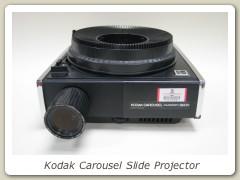
This projector is used to show 35mm slides. It’s name is derived from the fact that the slides are arranged in a circular tray. A single tray can hold up to 140 slides. These projectors appeared on the scene in the 1960’s, and became very popular in scientific presentations (lantern slides were used prior to this shown elsewhere in this collection). They slowly gave way to overhead projectors in the 1970’s, 80’s, 90’s and finally to PowerPoint presentations.
Fairchild Movie/Oscilloscope Camera
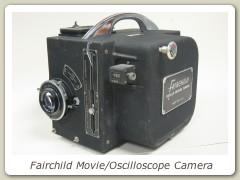
This camera was used in the Department primarily for taking single-frame pictures of oscilloscope traces in the early 1950s.
Film Loop Projector
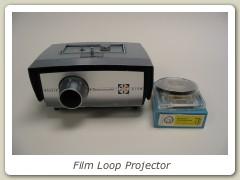
These projectors were used extensively in physics lectures to show short movie clips to illustrate various physics concepts, such as, Newton’s Laws, wave motion, kinetic theory of gases, time reversal, to name just a few. An 8-mm film loop is packed inside a cartridge, therefore one does not have to load and unload spools. The film-loop continuously repeats itself. These projectors have given way to DVDs and web-based video clips.
196B Oscilloscope Camera
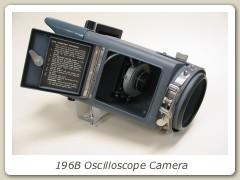
This oscilloscope camera with a Polaroid Land Camera Instant Film attachment was used to record single traces on an oscilloscope that were too short-lived for the eye to see. It was originally priced at $445 in 1962 ($3000 in 2007 currency) and produced a finished photograph of the trace in 10 seconds, making it much more desirable than a camera with normal negative film that needed extensive time to be developed.
Lantern Projector
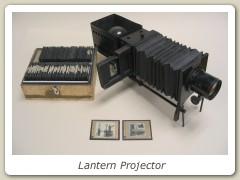
These projectors were widely used to project instructional slides, such as the ones shown here, and for showing research results at professional meetings. In the early seventies they gave way to 35mm projectors and overhead projectors.
A lantern slide
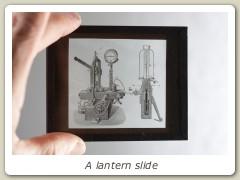
A lantern slide used in the lantern projector.
Overhead Projector
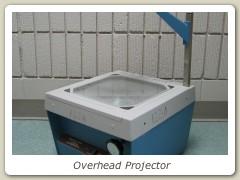
Overhead Projectors replaced 35-mm projectors for physics (and other) lectures in the mid-1970’s. They were clearly preferred because of the ease with which they could be manipulated by the lecturer and the fact that the lecturer could write on the transparencies during the lecture. Also, the transparencies are much easier to produce than 35-mm slides. They are fast giving way to PowerPoint presentations.
Polaroid Model 420
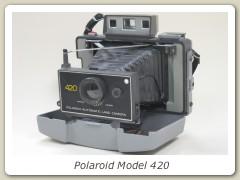
Polaroid Model 420 Automatic Folding Land Camera produces instant prints using either Type 107 Black & White or Type 108 Color Film.
Polaroid Land Camera Model 160
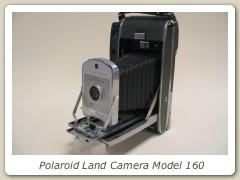
One of the early Polaroid Cameras used in the Department (probably around 1970). The camera was used primarily in conjunction with a strobe light for taking pictures of moving objects.
Polaroid Instrument Camera
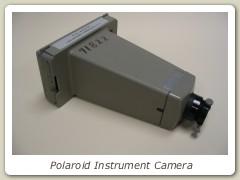
Polaroid Land Instrument Camera Model ED-10 with eyepiece adaptor was attached to scientific instruments and took pictures through the microscope lenses. It was originally released in 1969.
Tektronix C-5C Oscilloscope Camera

This camera with a Polaroid-instant-film back, has a battery-operated electronic shutter. This camera was used by Professor Gupta and students in the mid-1980’s for photothermal spectroscopy experiments. The hood that connects the camera to the oscilloscope is not shown.
Tektronix C-12 Oscilloscope Camera
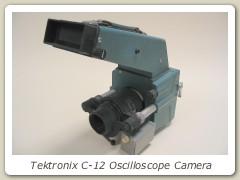
This oscilloscope camera was used with a storage oscilloscope. It was used to record the oscilloscope’s cathode ray tube traces to record the data. It attaches to the oscilloscope on a hinge and can take photos with film negatives or Polaroid Instant Film with adapters. This particular model was first produced in 1967.
Watson Camera
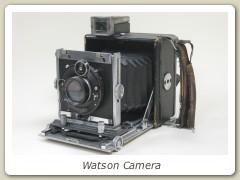
This Watson Camera was purchased by the Physics Department in 1942 for $123. (In 2007 dollars it would have been $1565.)